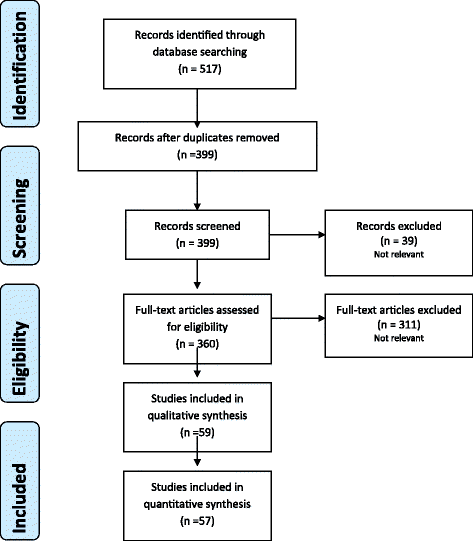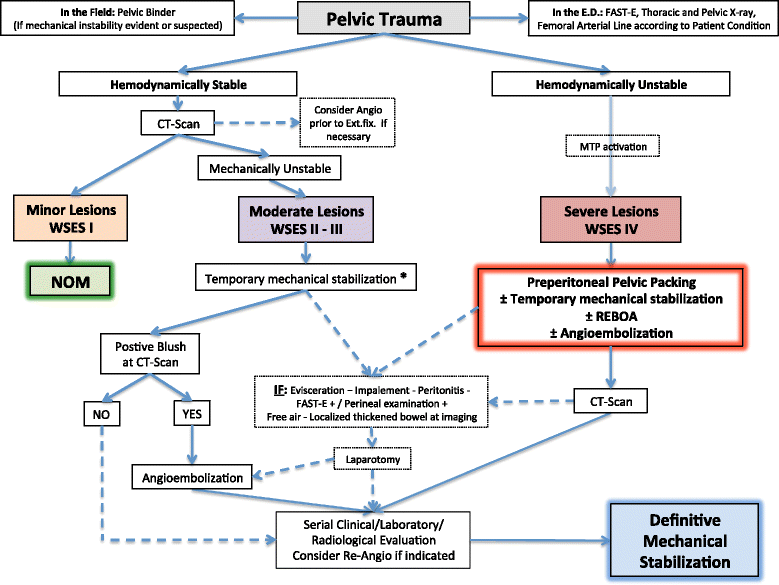Pelvic trauma: WSES classification and guidelines
- PMID: 28115984
- PMCID: PMC5241998
- DOI: 10.1186/s13017-017-0117-6
Pelvic trauma: WSES classification and guidelines
Abstract
Complex pelvic injuries are among the most dangerous and deadly trauma related lesions. Different classification systems exist, some are based on the mechanism of injury, some on anatomic patterns and some are focusing on the resulting instability requiring operative fixation. The optimal treatment strategy, however, should keep into consideration the hemodynamic status, the anatomic impairment of pelvic ring function and the associated injuries. The management of pelvic trauma patients aims definitively to restore the homeostasis and the normal physiopathology associated to the mechanical stability of the pelvic ring. Thus the management of pelvic trauma must be multidisciplinary and should be ultimately based on the physiology of the patient and the anatomy of the injury. This paper presents the World Society of Emergency Surgery (WSES) classification of pelvic trauma and the management Guidelines.
Keywords: ABO; Angiography; External fixation; Guidelines; Injury; Internal fixation; Management; Mechanic; Pelvic; Pelvic ring fractures; Preperitoneal pelvic packing; REBOA; Trauma; X-ray.
Figures



References
-
- Cullinane DC, Schiller HJ, Zielinski MD, et al. Eastern Association for the Surgery of Trauma practice management guidelines for hemorrhage in pelvic fracture--update and systematic review. J Trauma. 2011;71:1850–68. - PubMed
-
- Magnone S, Coccolini F, Manfredi R, et al. Management of hemodynamically unstable pelvic trauma: results of the first Italian consensus conference (cooperative guidelines of the Italian Society of Surgery, the Italian Association of Hospital Surgeons, the Multi-specialist Italian Society of Young Surgeons, the Italian Society of Emergency Surgery and Trauma, the Italian Society of Anesthesia, Analgesia, Resuscitation and Intensive Care, the Italian Society of Orthopaedics and Traumatology, the Italian Society of Emergency Medicine, the Italian Society of Medical Radiology -Section of Vascular and Interventional Radiology- and the World Society of Emergency Surgery) World J Emerg Surg. 2014;9:18. doi: 10.1186/1749-7922-9-18. - DOI - PMC - PubMed
Publication types
MeSH terms
LinkOut - more resources
Full Text Sources
Other Literature Sources
Medical

